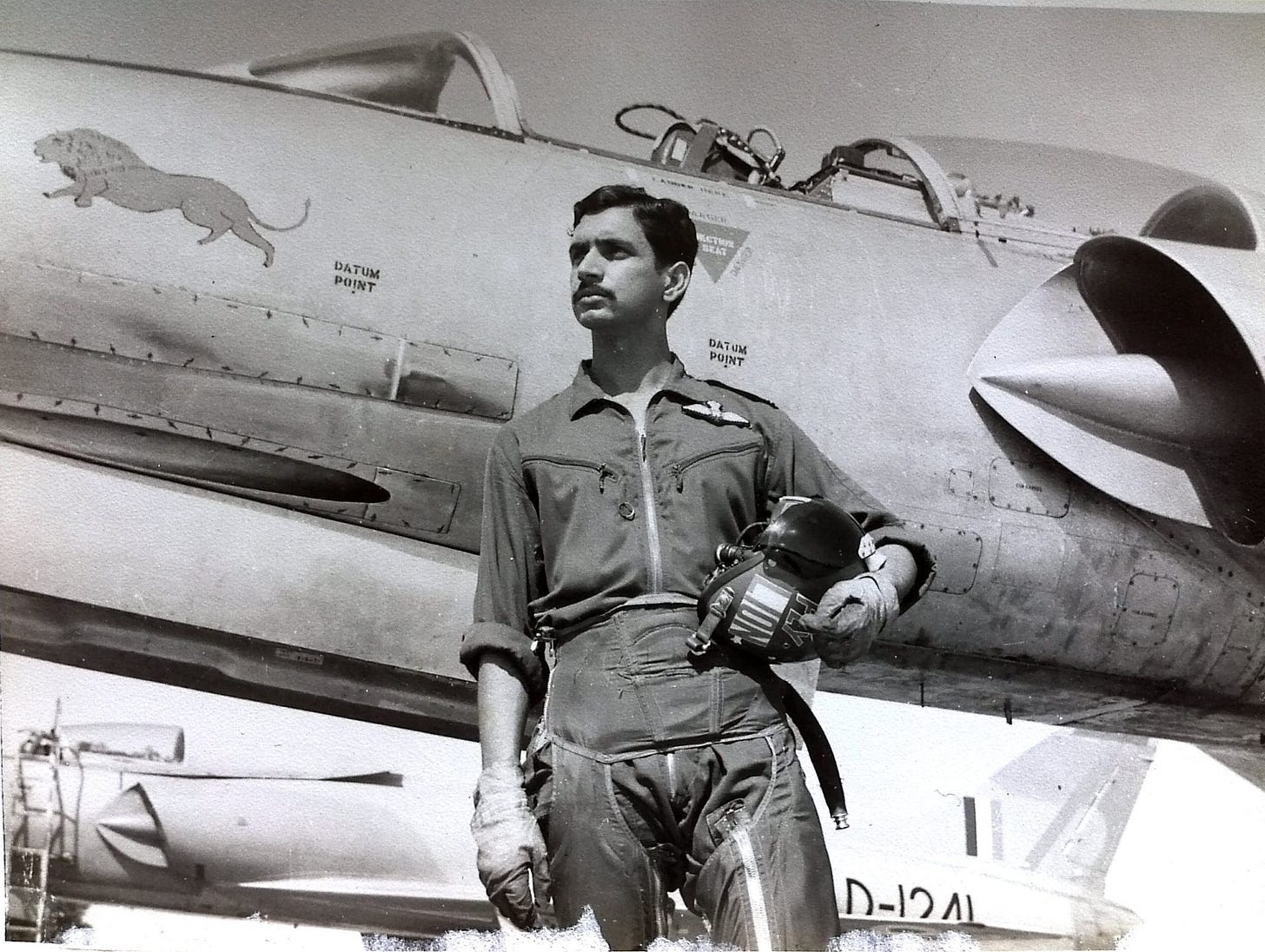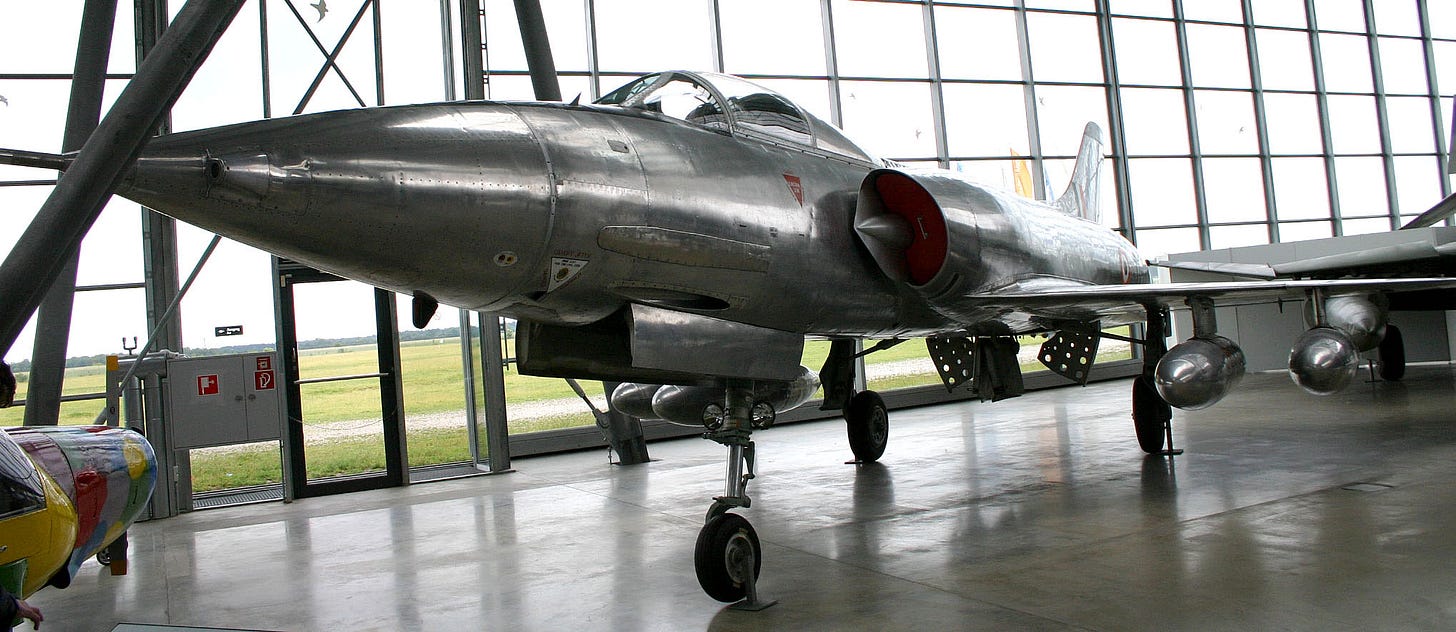Following the defeat of Nazi Germany, the aircraft designer Kurt Tank — creator of the world-beating Focke-Wulf Fw 190 — went to Argentina. Here he worked on jet fighters, before heading to India with a great deal of research material. Hindustan Aircraft Limited (HAL) worked with Tank on an exceptionally sleek new fighter, the Marut. Seldom remembered, and when recalled often written off as a failure, the Marut actually had the potential - but not the requisite good fortune - to have become an exceptional machine. We spoke to former IAF pilot Vijainder K Thakur about flying and fighting in Kurt Tank's final fighter.
Vijainder K Thakur
Which three words best describe the Marut?
"Pretty, Promising, Played."
What were your first impressions?
"Having already flown the Hunter, a similar class aircraft, at Operation Conversion Unit (OCU) the move to Maruts wasn't daunting. The Hunter had a better thrust-to-weight ratio than the Marut. However, the Marut's supersonic design, spacious cockpit and pleasant cockpit interiors looked inviting. There was also the hope that the aircraft would get a better engine gaining speed and punch."
What was the best thing about it?
"Good low-level handling - fast and responsive. We could clock 620 kts at 500 ft in the late production (extended chord) D series and around 650 kts in earlier BD series. Twin engines ensured safety from bird hits at low levels and a spacious cockpit facilitated map storage and reading. "
And the worst thing?
"The large number of technical issues that plagued the aircraft. The Marut's high pressure (4000 psi) hydraulic system was prone to failures. Backup manual controls mitigated the impact of such failures but there was always the fear of the leaking hydraulic fluid catching fire. There were several cases of compressor blades rubbing against engine casing leading to catastrophic failures. Poor HAL workmanship caused fatal accidents such as canopy jettisoning failure!"
How do you rate the Marut in the following categories?
A. Instantaneous turn
Good at low levels, with turn rate limited by G limit.
B. Sustained turn
Reasonably good at low levels as long as you didn't excessively bleed your speed below 420 kts.
C. High alpha
Sluggish but safe.
D. Acceleration
Good at low levels up to speeds of around 580 kts. Poor at higher altitudes.
E. Climb rate
Good at low levels.
When did India procure the Marut and where were you trained?
"The Marut was operationally inducted into the IAF on April 1, 1967 at Armament Training Wing (ATW), Jamnagar with the standing up of No. 10 Squadron (Daggers), which had been number-plated since April 1964. The squadron was raised with 12 prototype and pre-production Maruts and two Hunter T 66 trainer aircraft. Prior to their operational induction, these Maruts had been test flown and evaluated by the IAF's Aircraft and Armament Testing Unit (A&ATU), the predecessor to the present day Aircraft and Systems Testing Establishment (ASTE). The initial batch of Marut pilots underwent pre-solo conversion on the Hunter T 66 trainer aircraft practicing take-offs, circuits and landings flying at speeds and using patterns and glide slopes identical to the Marut. Within two months of operational induction, there were two major Marut accidents - a fatal crash and an ejection.
After requipping and becoming operational with Maruts, No 10 sqn took on the role of Marut training squadrons and helped raise two additional Marut squadrons - 220 (Desert Tigers) and 31 (Lions).
Around May 1969, 10 squadron moved from Jamnagar to Pune; shortly thereafter, 220 sqn was raised from pilots and aircraft that had accreted to 10 sqn since its raising. The two Marut squadrons moved to Jodhpur in December 1970.
"The Marut was built tough. Dr Kurt Tank designed the Marut to be tough enough to slice a tree in half with its wing... its fin could cut through high tension cables with just a gash to show for it. A gash that could be easily repaired to preclude raising even an incident report or linking it to a massive power failure south of Jodhpur!"
What was its combat record?
"During the 1971 ops, 10 and 220 squadrons operated from Jodhpur and proved their mettle flying Close Air Support and Interdiction missions. Three Maruts were lost to enemy ground-fire. The Maruts reportedly flew around 300 sorties during the 1970 Ops. Those who participated in the ops feel that the aircraft was grossly under-utilised. For example, its very potent 30-mm Aden cannon..
Keep reading with a 7-day free trial
Subscribe to Hush-Kit Aviation Newsletter to keep reading this post and get 7 days of free access to the full post archives.





